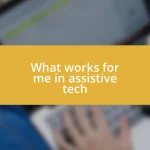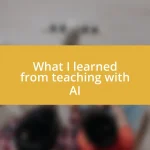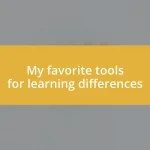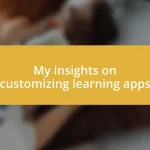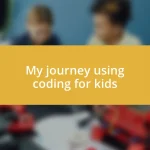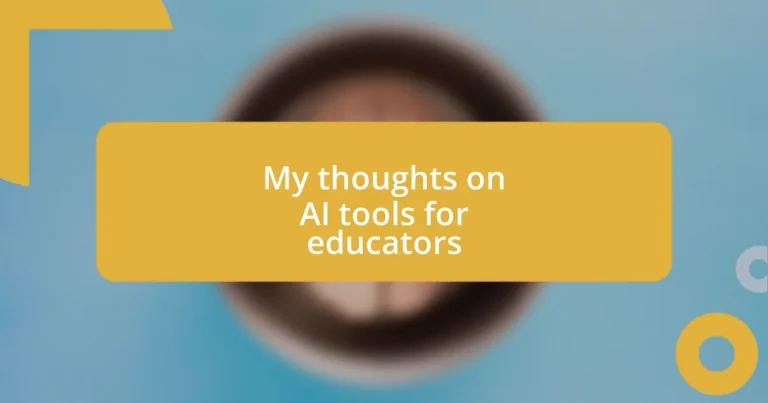Key takeaways:
- AI tools in education can personalize learning experiences and enhance student engagement, but careful integration and clear objectives are essential for effectiveness.
- Challenges such as technological barriers, dependency on AI for critical thinking, and issues of equity and access must be addressed to maximize the benefits of AI in the classroom.
- Future prospects for AI in education include personalized learning, enhanced collaboration among educators, and the importance of maintaining ethical standards regarding data privacy.
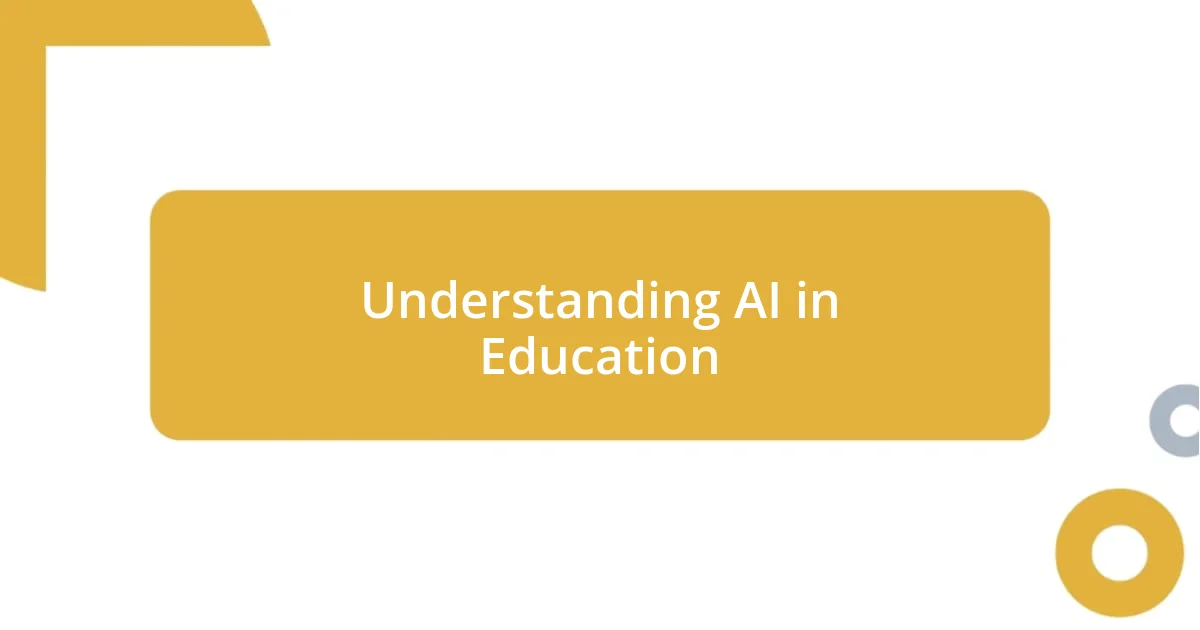
Understanding AI in Education
As I’ve explored AI tools in education, I’ve been amazed at how they can personalize learning experiences. Imagine a classroom where each student receives tailored resources that cater to their unique learning style. Doesn’t that sound like a dream come true for educators and students alike?
I remember a time when I was helping a struggling student with math. We used an AI-driven app that identified her weaknesses and provided exercises accordingly. The joy on her face when she finally grasped a concept was priceless, a very tangible reminder of the positive impact AI can have.
However, it’s essential to consider the ethical implications of AI in the classroom. Are we truly prepared to navigate the complexities of data privacy and dependence on technology? These are crucial questions educators must grapple with as we embrace the potential of AI tools.
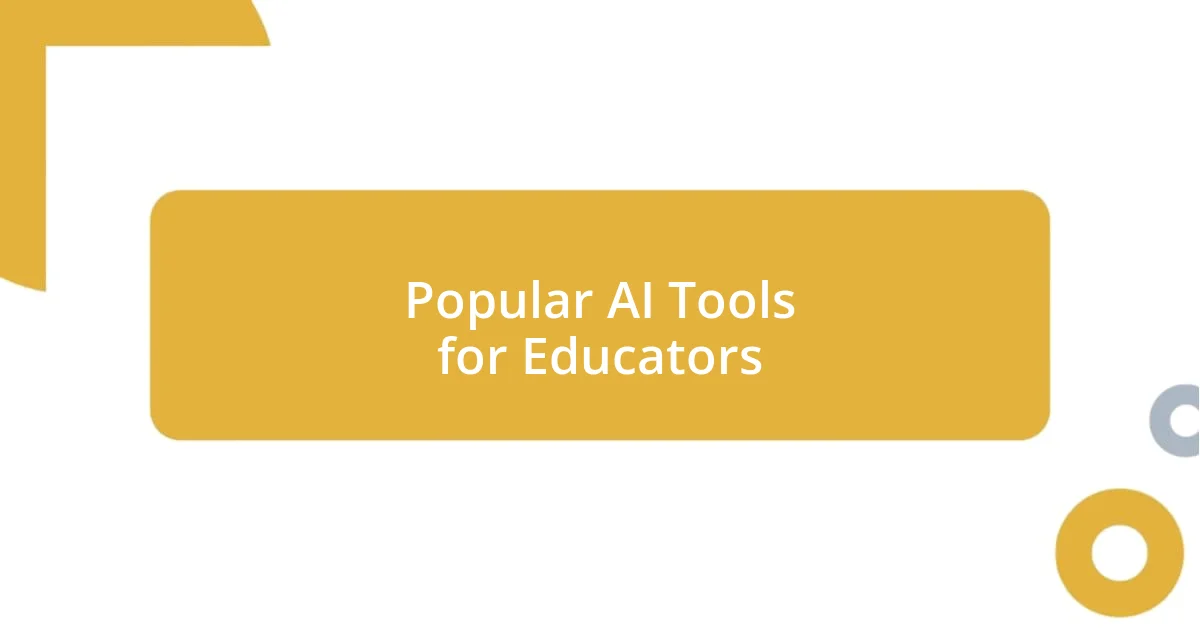
Popular AI Tools for Educators
When we talk about popular AI tools for educators, a few standout options come to mind. For instance, platforms like Kahoot! and Quizizz leverage AI to create engaging quizzes that adapt to students’ knowledge levels. I’ve seen how these tools can turn a mundane review session into an interactive game. The buzz and laughter in the classroom are undeniable; it’s fascinating how learning can feel more like play.
Another noteworthy tool is Grammarly, which serves as a writing assistant for both educators and students. I’ve used it to refine lesson plans and student essays, enjoying the feedback it provides in real-time. It feels like having an extra set of eyes that not only catch typos but also enhance clarity—something I find incredibly valuable when aiming for effective communication.
Lastly, there’s Nearpod, which merges virtual reality with lesson interactivity, allowing students to explore topics like never before. I remember using it for a history lesson where students could virtually step into ancient Rome. The excitement was palpable, and their questions flowed freely as they engaged with the material. AI isn’t just a teaching aid; it creates unforgettable learning experiences.
| Tool | Purpose |
|---|---|
| Kahoot! | Interactive quizzes |
| Grammarly | Writing assistant |
| Nearpod | Interactive lessons with VR |
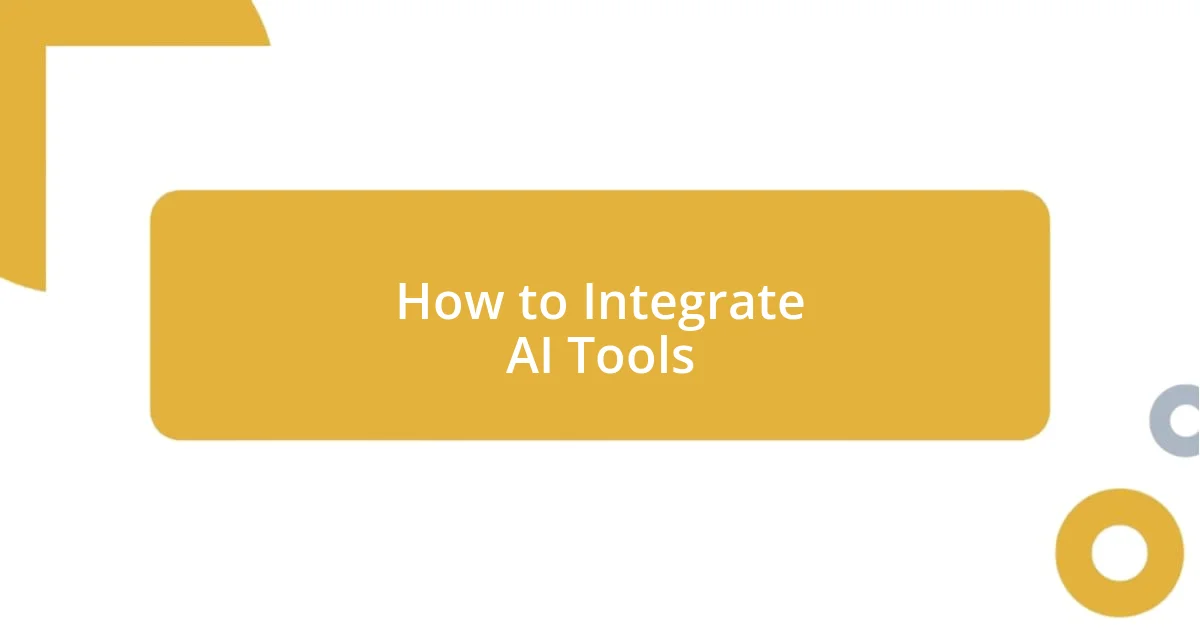
How to Integrate AI Tools
To effectively integrate AI tools into the classroom, it’s essential to start with clear objectives. I’ve found that aligning these tools with specific educational goals can significantly enhance the learning experience. For example, when I implemented an AI tool for personalized reading assignments, I noticed not just improved engagement but also genuine enthusiasm among students.
Here are some tips to help educators smoothly integrate AI tools into their teaching practices:
– Identify Learning Objectives: Understand what you aim to achieve with AI tools. It could be enhancing student engagement or personalizing learning paths.
– Start Small: Introduce one AI tool at a time. This approach allows for gradual adaptation and enables you to measure effectiveness more accurately.
– Provide Training: Ensure both educators and students are well-versed in using the technology. I remember hosting a brief workshop on a new AI tool, which led to heightened interest and confidence among my colleagues.
– Gather Feedback: Regularly check in with students and colleagues to gather insights on the AI tool’s impact. This feedback loop can drive future adjustments and improvements.
– Evaluate Ethical Considerations: Always consider data privacy and access issues, ensuring that your AI integration is fair and responsible.
When I first tried an AI-driven tutoring system, I was skeptical. However, witnessing the significant progress of students who previously struggled to keep up was eye-opening. The smiles and newfound confidence in their abilities made it clear that when integrated thoughtfully, AI tools can revolutionize teaching and learning.
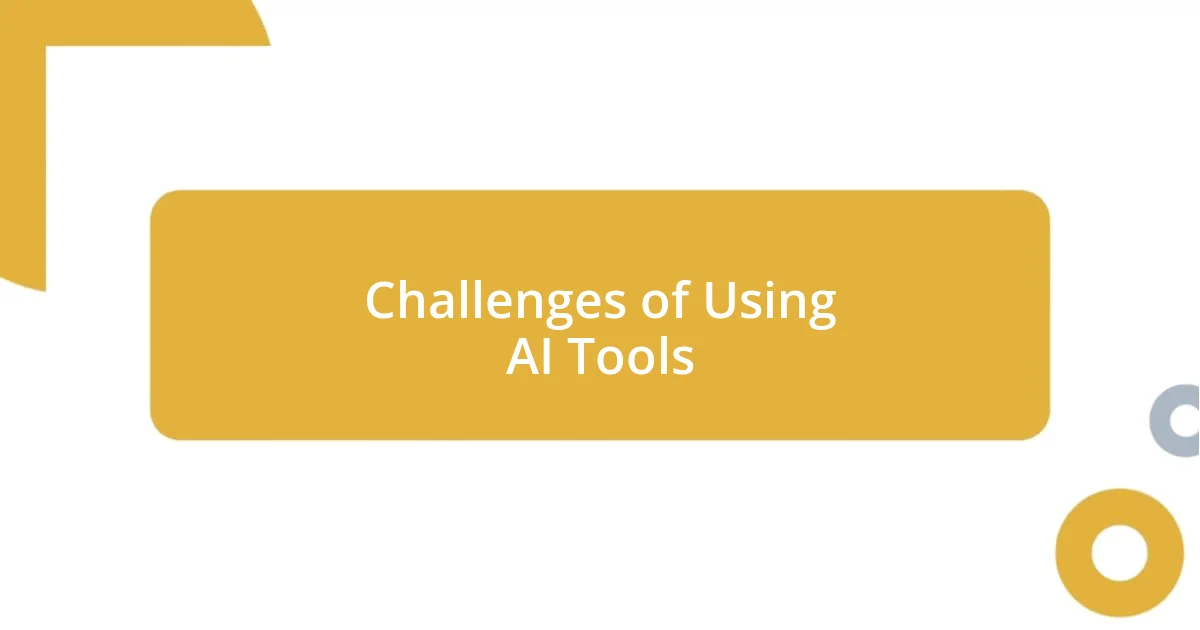
Challenges of Using AI Tools
When it comes to the challenges of using AI tools in education, I often find that technological barriers can be a significant hurdle. For instance, integrating these tools into existing classroom systems sometimes feels like trying to fit a square peg into a round hole. I remember a time when I attempted to introduce a new AI tool, only to discover that our school’s hardware was outdated, resulting in a frustrating delay that impacted my students’ eagerness to learn.
Another challenge that frequently arises is the risk of dependency on AI for critical thinking and problem-solving skills. I’ve noticed that students might lean too heavily on AI-driven tools for answers, losing the chance to engage in deep analysis. This concern makes me wonder—are we diminishing their ability to think independently? It’s essential for us as educators to strike a balance between utilizing technology and fostering creative thinking abilities.
Finally, there’s the question of equity and access. While AI tools can enhance learning for many, they can also widen the gap for those who lack sufficient resources or internet access. I vividly recall a student who struggled to complete assignments that required online AI tools due to limited access at home. This circumstance left me questioning how we can ensure that all students benefit equally from the advantages of technology without leaving anyone behind. Finding solutions to these challenges is crucial if we’re to harness AI’s true potential in the classroom.
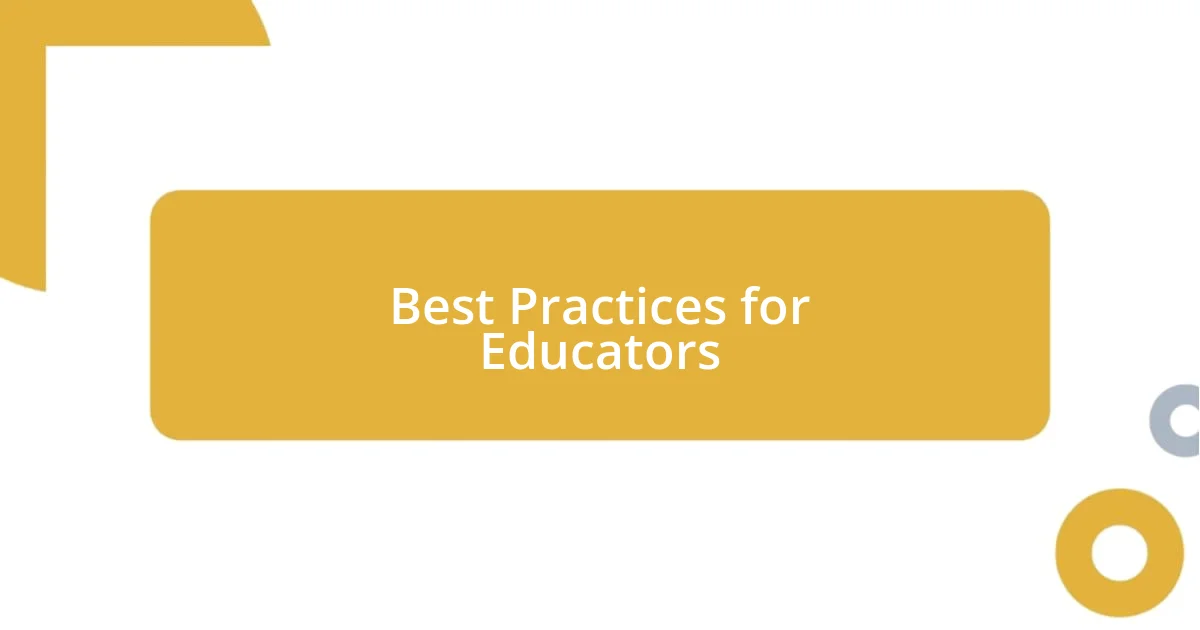
Best Practices for Educators
Integrating AI tools requires careful planning and thoughtfulness. When I started utilizing an AI writing assistant in my classroom, the initial pushback from some students made me realize I needed to create a comfortable environment for experimentation. Encouraging dialogue about the tool’s purpose and potential benefits not only eased their concerns but also sparked exciting conversations about technology’s role in learning. Isn’t it amazing how fostering open communication can transform skepticism into curiosity?
Additionally, I’ve found that sharing my experiences—both the triumphs and struggles—can be incredibly beneficial. I once shared my challenges with a new AI grading tool during a staff meeting. To my surprise, several colleagues opened up about their own hurdles, leading to a collaborative atmosphere that helped us all improve our approaches. This made me wonder: how often do we underestimate the power of community in navigating the complexities of educational technology?
Lastly, it’s crucial to engage students in the decision-making process regarding which AI tools to adopt. On one occasion, I invited my students to help select an educational app they believed would enhance their learning experience. Their enthusiasm and ownership over the tool made a remarkable difference in how they utilized it. This not only empowered them but also highlighted something I often ponder—when we let students guide their learning experiences, how much more invested do they become in their education?
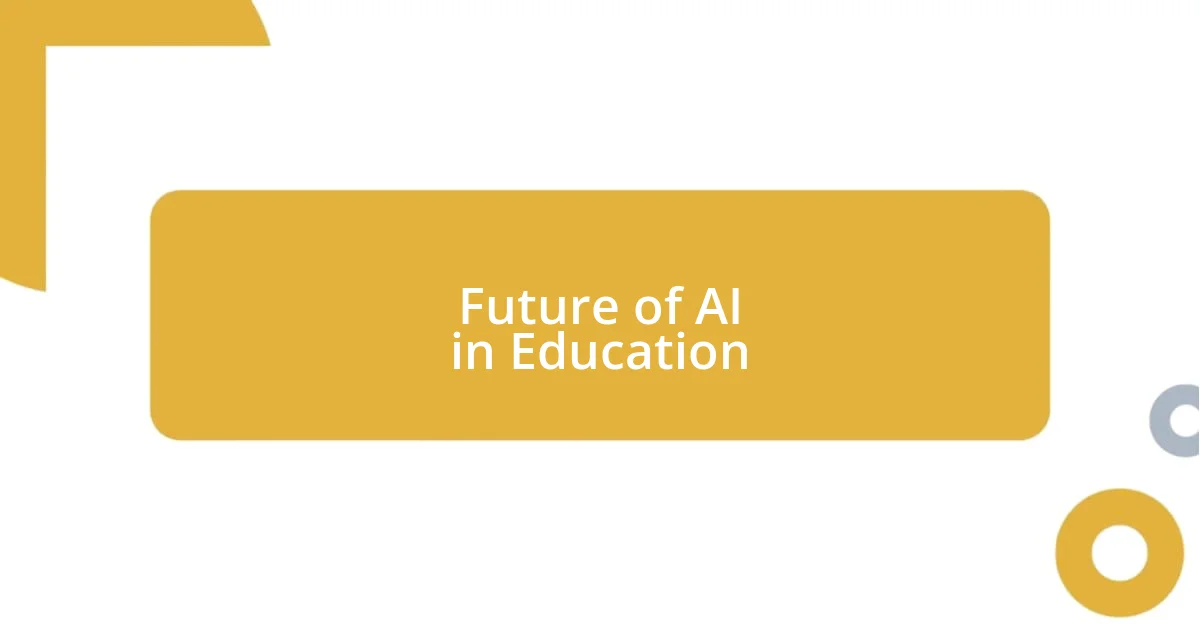
Future of AI in Education
As I consider the future of AI in education, I can’t help but feel a sense of excitement mingled with caution. I envision classrooms where personalized learning experiences become the norm, driven by AI’s ability to adapt to each student’s unique needs. Imagine a scenario where a student who struggles with math receives tailored exercises just for them, while another who excels can dive into more advanced topics. It’s this kind of customization that I believe could foster deeper engagement and understanding, but it also raises the question: how do we ensure that teachers remain integral to this process, guiding learning rather than taking a back seat?
I also think about the potential for enhanced collaboration among educators, facilitated by AI tools. The idea that these technologies could streamline administrative tasks is incredibly appealing. For instance, when I recall the countless hours spent on lesson planning, I can almost feel the weight lifting at the thought of AI assisting in that realm. It poses an interesting thought: could AI free up our time so we can focus more on building relationships with our students? I genuinely believe it could be a game changer in creating a more dynamic, interactive educational atmosphere.
Lastly, the ethical implications of AI use in education cannot be overlooked. I often ponder the balance between leveraging AI advancements and safeguarding our students’ privacy. As we incorporate tools that analyze behavior and learning patterns, I can’t help but ask myself: are we fully aware of the data we’re collecting? It’s crucial that as educators, we not only embrace technology but also advocate for responsible practices that protect our students, ensuring that the future of AI in education enhances learning without compromising ethical standards.

